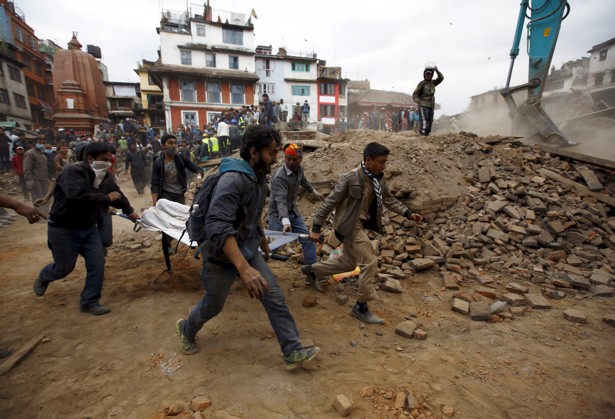
Over 2,000 people have died in the devastating earthquake in Nepal. The sheer magnanimity of the death toll has once again brought forth the helplessness of scientists and researchers, who had since 2013 warned of a massive Himalayan quake.
The last major earthquake (magnitude 8.4) occurred in 1934, killed an estimated 17,000 across both Nepal and India. Since then, researchers have been tirelessly studying the 'fault' lines of the last earthquake to predict the next one, but failed to do so.
Seismologist James Jackson, head of the earth sciences department at the University of Cambridge in England, was in Kathmandu just a week ago. Following the 7.9-magnitude earthquake, he told Associated Press that scientists knew 'they were racing against the clock, but they didn't know when they feared would strike'.
Jackson, who was part of a 50-strong scientists and researchers team from across the world, said that the devastation following the earthquake was long feared, not because of the seismic activity, but because of population pressure and degradation of the environment.
As far back in 2013, Vinod Kumar Gaur, seismologist with the Centre for Mathematical Modelling and Computer Simulation in an interview with The Hindu had predicted a great earthquake.
"Calculations show that there is sufficient accumulated energy, now to produce an 8-magnitude earthquake. I cannot say when. It may not happen tomorrow, but it could possibly happen sometime this century, or wait longer to produce a much larger one," Gaur had said then.
The existence of devastating quakes in the past meant that tremors of the same magnitude could happen again in the region in future, he had said.
Similarly, less than two months ago a team of Indian scientists had predicted "a great earthquake" near the central Himalayas, HT reported.
"The frontal thrust in central Himalaya may have remained seismically inactive during the past 700 years. Considering this long elapsed time, a great earthquake may be due in the region," the research paper authored by C P Rajendran of the Jawaharlal Nehru Centre for Advanced Scientific Research, Bengaluru; Biju John of the National Institute of Rock Mechanics, Kolar Gold Fields; and Kusala Rajendran of the Indian Institute of Science, Bangalore observed.
It had concluded that since the Himalayas experienced three great earthquakes -- in 1934 (Nepal-Bihar), in 1950 (upper Assam) and in 1905 (Kangra) -- based on its history, this region could witness another 'big one' soon.

















